Don't sleep on these secondary contenders for East supremacy
Dynasties often rule the NBA, but we're in an era of relative parity: We've seen four different champions and seven different finalists over the last four years. This coming season again features an uncommonly deep field of contenders. We're laying out reasons to believe in them and reasons to doubt them.
Next up, the second tier of the Eastern Conference. Part 1 featured the East's top tier of contenders.
Cleveland Cavaliers
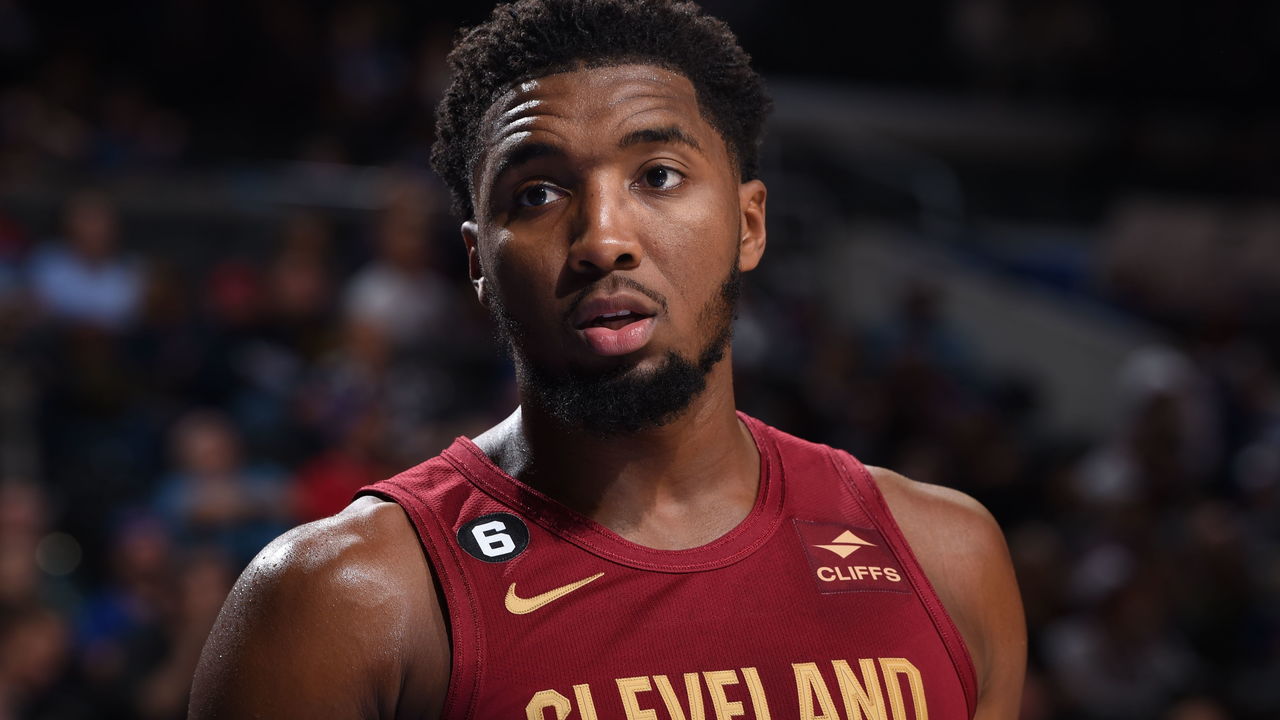
Reasons to believe: Behind a huge, defensively versatile front line and a major breakout from do-it-all creator Darius Garland, the upstart Cavs won 44 games last season. They would've won a bunch more if not for injuries that sidelined Jarrett Allen and Evan Mobley for extended stretches after erasing any semblance of secondary ball-handling the team had. Garland capably handled the increased responsibility after Collin Sexton and Ricky Rubio were lost for the season, but without any support behind him, the offense collapsed.
Enter Donovan Mitchell, who's about as good a complementary ball-handler as you could ask for and fresh off a season in which he served as the engine for the league's most efficient offense. His playmaking limitations will be less of an issue when he's paired with Garland, one of the league's most gifted passers. And when Garland's on the bench, Mitchell's elite self-creation and pick-and-roll chops will allow him to carry transitional lineups. (Without Garland on the floor last year, Cleveland scored at a rate commensurate with the 30th-ranked Thunder.) Any way you slice it, this team is poised to significantly improve its 20th-ranked offense.
There's also a ton of room for growth from the Cavs' existing core. The 21-year-old Mobley was arguably the most polished defensive big to enter the league since Tim Duncan, and he has plenty of untapped offensive upside. Garland blossomed into an All-Star at 22. Allen just had his best season on both sides of the ball at 23, flashing a newly refined post game to go along with his ferocious rim protection and above-the-rim finishing. Mitchell, the nominal old head of the group, is still just 26. That quartet has a chance to be as good as any in the East.
Depth may not be the Cavs' strong suit, but if they can get another good season of bench production from Kevin Love, a bounce-back from Caris LeVert, and slightly bigger contributions from their low-usage wing corps of Isaac Okoro, Lamar Stevens, and Dean Wade, they'll start to look like a very complete team.

Reasons to doubt: As good as Cleveland's core foursome of guards and bigs can be, its dearth of quality wing play has to be a concern.
The team is clearly betting on Okoro's ability to expand his offensive game and fill that void, but he's a long way from being a positive contributor on that end of the floor. Though he showed some improvement as a stationary 3-point shooter last year, he did so on low volume while defenses completely ignored him. That's not ideal considering the Cavs start two other non-spacers in Allen and Mobley. Okoro's a good cutter, but he's limited even in that capacity by his poor touch around the hoop. The bench doesn't offer a ton of solutions either - at least not if defense is going to remain the top priority.
In light of those limitations, it's worth asking whether the Cavs' offense can improve meaningfully without a corresponding defensive dip that would prevent them from jumping into the echelon of contenders. Even with a pair of agile 7-footers patrolling the back line, it's tough to cover for two 6-foot-1 liabilities at the point of attack. Garland and Mitchell will need all the support they can get from the wing, and no one outside of Okoro seems capable of providing a sufficient amount of it.
Even with the 6-foot-5 Okoro out there, the Cavs won't have a great answer for the East's jumbo playmaking wings like Kevin Durant, Jayson Tatum, and Jimmy Butler. Cleveland will also struggle to defend teams with multiple big perimeter creators like the Celtics, Bucks, Raptors, and Bulls. Even if there's enough raw talent here to contend, the roster balance feels a little bit off.
Toronto Raptors
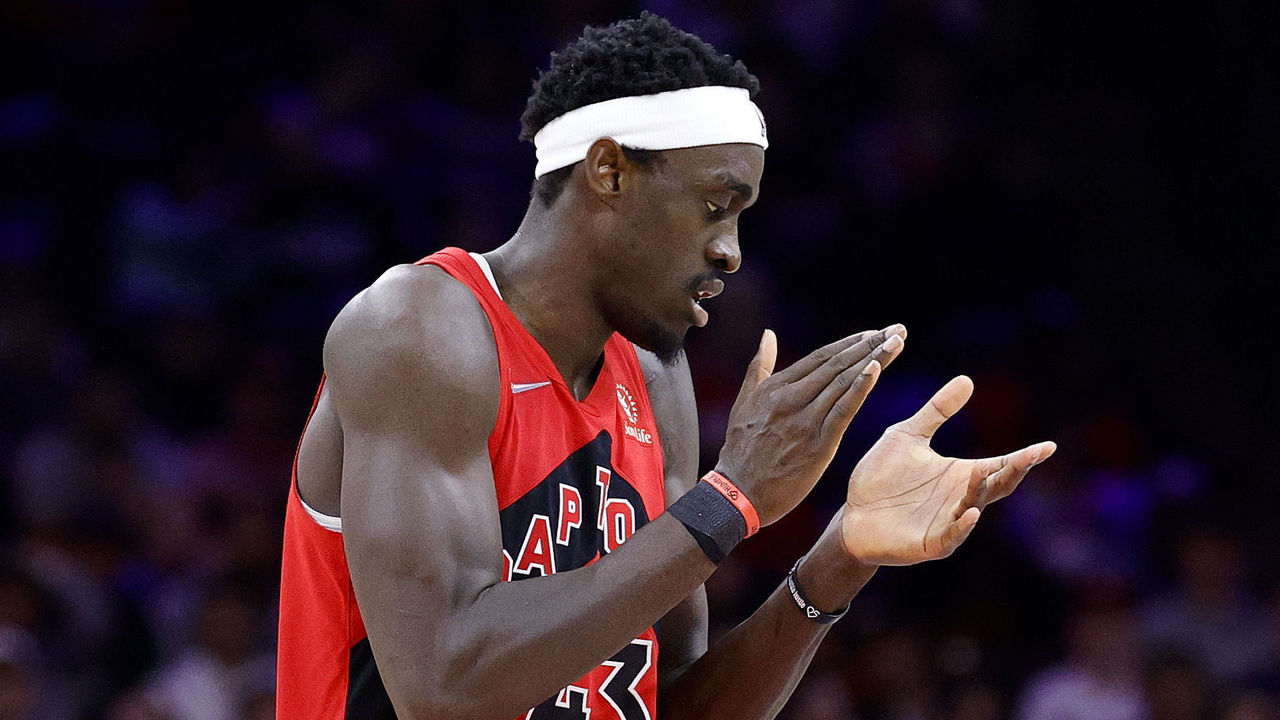
Reasons to believe: The Raptors were one of the best teams in the NBA over the back half of last season, amassing a 34-17 record with the league's sixth-best defense after the calendar flipped to 2022. And that stretch of games was a more credible representation of what this team is capable of than the choppy start that preceded it.
Pascal Siakam started the season on the shelf and took a while to find his footing after returning, but by season's end, he was cooking everyone and everything in the middle of the floor while practically teleporting around the court on defense. Scottie Barnes grew increasingly comfortable as a self-creator and team defender en route to Rookie of the Year honors, Precious Achiuwa made one of the more remarkable in-season leaps you'll ever see, responsibilities calcified for key role players like Gary Trent Jr. and Chris Boucher, and Thaddeus Young arrived to stabilize and deepen a very thin bench.
Most importantly, the Raptors collectively figured out how to execute Nick Nurse's frenetic defensive scheme after scuffling initially due to inexperience and poor communication. Now they get to pick up where they left off, but with the added benefit of a developmental offseason for Barnes and Achiuwa, the addition of a major spot-up threat in Otto Porter Jr., and hopefully better health for core pieces like Fred VanVleet (who played at an All-NBA level in the first half before being derailed by knee and hip injuries), O.G. Anunoby (who missed nearly half the season due to a variety of ailments), and Siakam (who got hit with COVID shortly after returning from shoulder surgery and didn't really get going until January).
Toronto has the personnel - and now the experience and continuity - to be a top-five defensive team. If VanVleet can play the way he did early last season, Siakam can play the way he did down the stretch, and Barnes can take a step forward as a ball-handler and shooter, there's a strong chance this team will be able to complement that elite defense with an above-average offense. The Raptors were something of a cute story last year, but they could get very scary very quickly.
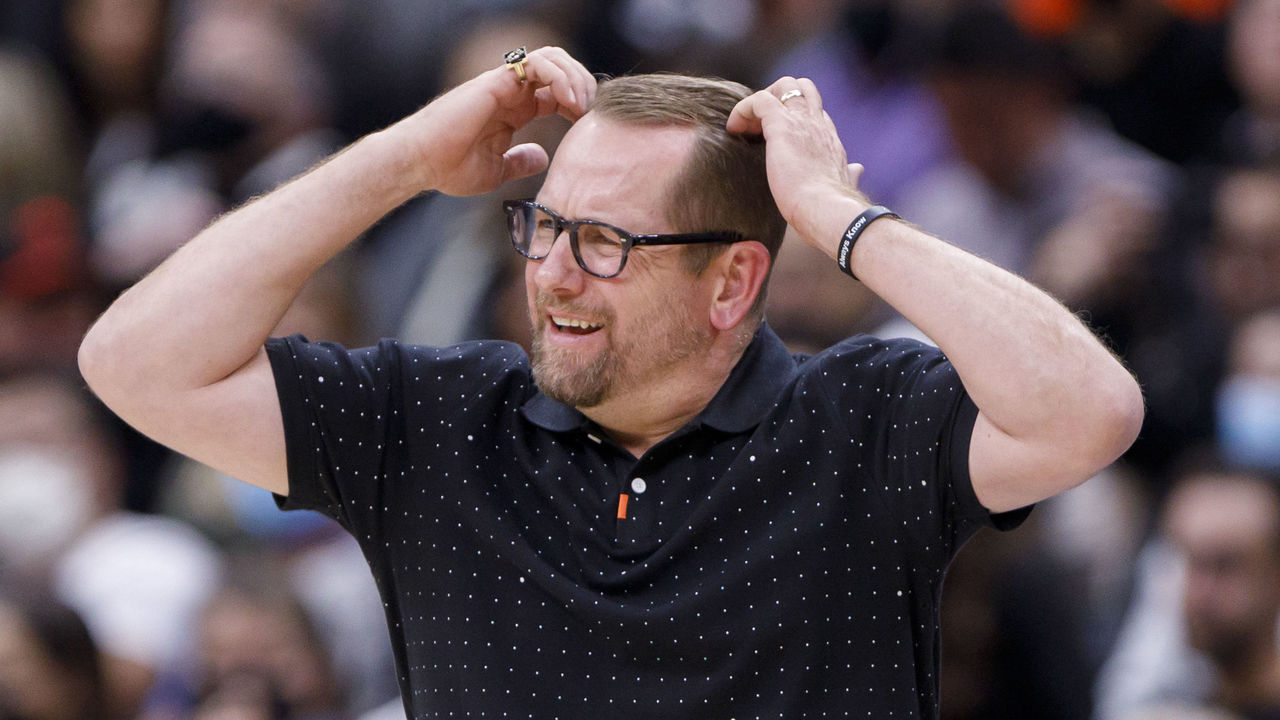
Reasons to doubt: Getting to 48 wins last season was a high-wire act that relied on the Raptors winning the possession battle to an absurd degree, with an average of seven more shooting possessions per game than their opponents.
They were only able to patch together a semi-functional offense by forcing a ton of turnovers on defense and crashing the hell out of the offensive glass, so they could either play in transition or generate second chances when confined to the half court. Their offensive rating on first-shot half-court possessions ranked 26th in the league. The reason? They were extremely light on ball-handling, pull-up shooting, floor spacing, and downhill juice. To wit: They ranked 28th in 2-point percentage, 20th in 3-point percentage, 25th in free-throw attempt rate, 26th in rim frequency, and last in assist rate.
Deciding not to roster a traditional big man meant the Raptors lacked a legitimate roll threat on offense, and it also meant they had no real rim-protector to anchor their chaotic defensive scheme. They compensated by sending aggressive help toward the middle of the floor in order to protect their back line, which led to them allowing the league's highest frequency of corner threes. Their lack of size in the middle coupled with their constant scrambling led to their 24th-ranked defensive rebound rate.
To address the roster holes that contributed to those issues, Toronto ... did almost nothing. Porter's 3-point shooting will help, and rookie center Christian Koloko might contribute in a minor role, but for the most part, the same glaring deficiencies persist. Though the Raptors have proven capable of finding workarounds for those deficiencies, there may be diminishing returns if they try to replicate the formula they used in 2021-22. The rest of the league has seen them do it for a full season and should be better prepared; the 76ers had them pretty well scouted in the first round of the playoffs.
Nurse always has a new wrinkle or two up his sleeve, but there's only so much he can do. The Raptors don't have the personnel to suddenly become a high-volume pick-and-roll team, or a team that pressures the rim with drives, or a team that thrives while playing conventional drop defense. Toronto is clearly banking on internal development, but even big leaps from Barnes and Achiuwa wouldn't necessarily address the team's specific limitations. So while the Raptors are on an upward trajectory and set up extremely well for the future, they may not be ready to leap into the contender stratum just yet.
Miami Heat

Reasons to believe: Doubt Jimmy Butler, Erik Spoelstra, and the rest of this organization at your own peril. Despite a quiet offseason and some obvious red flags, it's hard to shake the feeling that the Heat will find a way to win a ton of games and get right back in the mix for Eastern Conference supremacy.
That starts with their ability to once again roll out a physical, intelligent, shape-shifting defense capable of changing schemes on the fly. They'll mix in switches, blitzes, and a variety of zones, all while staying true to their core principles: overloading the strong side, plugging driving gaps, jumping passing lanes, and rotating on a string behind their aggressive early help. Bam Adebayo is one of the league's most versatile defenders and probably its best switch big. Butler is still a maniacally disruptive rover. Kyle Lowry remains one of the smartest and stoutest small defenders around (you can count on one hand the number of guards who make better low men). That's a bedrock atop which Miami can construct any type of defense it wants.
The offense will be more touch and go, but Spoelstra's unconventional system - full of cuts, off-ball screens, dribble-handoffs, and high-post split action - plays like a knuckleball that can leave opposing defenses flat-footed. Sowing confusion through perpetual motion is how a team that started two complete non-spacers in Butler and Adebayo managed to finish last season ranked first in 3-point percentage and 10th in overall offensive efficiency.
Despite a raft of injuries in both the regular season and playoffs, the Heat secured the East's No. 1 seed and fell one transition 3-ball short of the Finals. Butler played arguably the best basketball of his career during that run, carrying the offense while proving once again that he's built for big moments. For as long as he's in his prime, he'll give his team a chance to win any playoff series it enters.
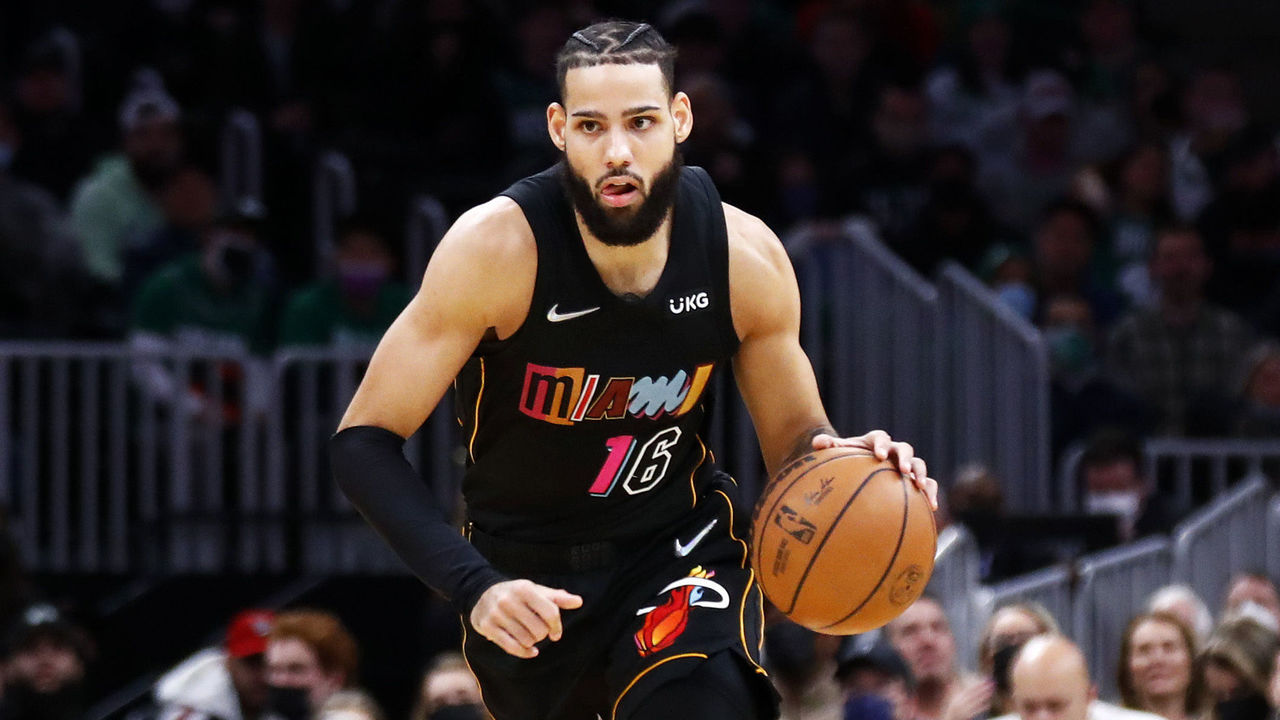
Reasons to doubt: Miami's half-court offense fared worse than all but three teams last postseason. Injuries to Lowry and Tyler Herro were a factor, but the Heat would've been running uphill regardless due to a lack of dynamic on-ball threats capable of bending defenses. Their collective inability to hit shots off the dribble allowed well-prepared opponents to duck under screens and defend their ball-screen actions two-on-two while staying home on their catch-and-shoot threats. That's why Miami's 3-point shooting plummeted from a league-best 37.9% in the regular season to just 31.4% in the playoffs.
Trying to improve the offense without compromising the defense has long been a precarious balance for Miami. That won't change this year with the team relying on defensive minuses like Herro, Duncan Robinson, and Gabe Vincent for shooting and off-the-bounce creation. Herro is central to the Heat's either/or conundrum. He's become a terrific scorer, but given his physical limitations, it's hard to see him developing into even a neutral defender. That sets the bar for his offensive production extremely high, and as such, the Heat haven't registered a positive net rating with him on the floor in any of his three playoff appearances. They performed 20.5 points per 100 possessions better with him on the bench last postseason.
Their potential for two-way balance also took a big hit when P.J. Tucker walked in free agency. Losing a crucial defender and spacer at the power-forward spot without having a comparable replacement lined up feels all too familiar for the Heat; the same thing happened when Jae Crowder departed after their 2020 Finals run, and the team didn't recover until it signed Tucker to fill the void last offseason. Is Caleb Martin really ready to be this team's full-time starting 4?
Lastly, there has to be some concern about the age of a couple of Miami's core players. Butler hasn't shown many signs of decline yet, but he's 33, and he plays a hard-charging, high-impact brand of basketball that relies on his ability to get to the rim and free-throw line. How much longer can he keep doing that at an elite level? The Heat were so dependent on his self-created scoring last season that they can't really afford any slippage from him. Lowry, for his part, is a 6-footer who's going to turn 37 this season. He probably isn't as cooked as he looked while playing through a hamstring injury last postseason, but he also can't be expected to finish a campaign with a clean bill of health at this point.
Maybe Miami has the horses to pick up the slack between Adebayo, Herro, Vincent, Max Strus, and a perhaps rejuvenated Victor Oladipo. But those names don't inspire a ton of confidence, and with the rest of the East getting stronger, it feels like the Heat are primed to tumble down the conference's pecking order.
Brooklyn Nets
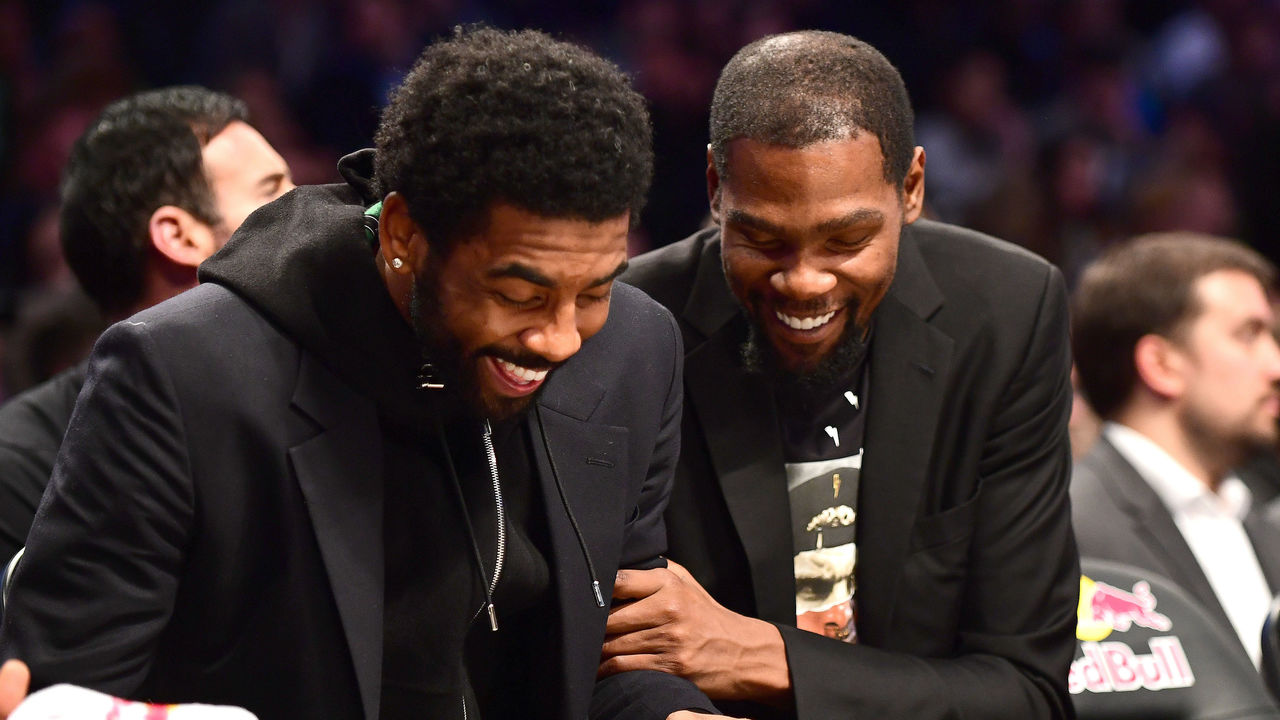
Reasons to believe: For all the chaos surrounding this team, the sheer talent here is undeniable. The Nets boast an all-time great in Kevin Durant; an extraordinarily gifted offensive sidekick in Kyrie Irving; an All-Defensive stalwart in Ben Simmons; a cadre of elite 3-point bombers in Seth Curry, Joe Harris, and Patty Mills; one of the game's better 3-and-D wings in Royce O'Neale; a switchable rim-protector in Nic Claxton; a high-scoring slasher in T.J. Warren; and an intriguing trio of sophomores in Kessler Edwards, Day'Ron Sharpe, and Cam Thomas.
Brooklyn was a top-10 offense last season despite an injured Harris, a largely absent Irving, a checked-out Harden (who was ultimately traded for a totally absent Simmons), and only 55 games from Durant. The Nets could easily be the best offensive team in the league provided they get even slightly more availability from their top players, and the additions of Simmons and O'Neale should significantly improve a lackluster defense. If lineups with Simmons at center can defend at a passable level, those configurations could be game-breaking at the offensive end.
This isn't the fanciful "Simmons surrounded by shooters" panacea that some (including Simmons) have pined for over the years; it's Simmons surrounded by shooters and two of the NBA's best on-ball creators. He can still be something of a point guard in transition, but in the half court, initiating duties should be handled by Durant and Irving. The on- and off-ball gravity provided by those two and any combination of Harris, Curry, Mills, and even O'Neale (who's quietly shot 39% from deep on four attempts per game over the last two seasons) will grant Simmons a ton of advantages and oceans of space in the middle of the floor, from which he can operate as a finisher or connective playmaker.
Brooklyn had the league's sixth-lowest 3-point attempt rate and ranked a modest 10th in 3-point percentage last year. But with Harris healthy, Curry on board for the whole season, Irving presumably returning as something closer to a full-time player, and Simmons around to create more catch-and-shoot looks with his inside-out passing, 2022-23 should be a different story.
In short, with an improved defense and potentially unstoppable offense, the Nets have an opportunity to make good on the promise that got them labeled preseason title favorites a year ago.
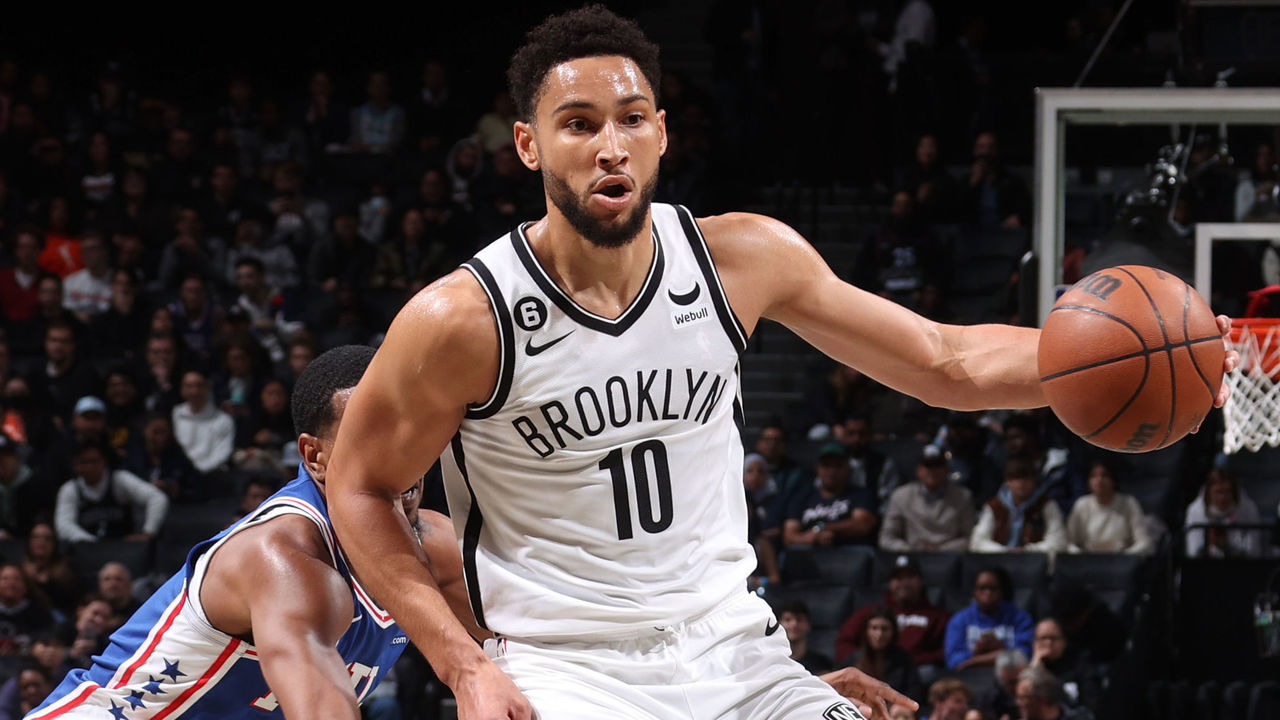
Reasons to doubt: How can you place an iota of trust in a team that's going to rely almost entirely on the buy-in of three of the flightiest, flakiest players in the league?
Durant is coming off a summer-long standoff with the front office in which he tried to hold owner Joe Tsai's feet to the fire and get coach Steve Nash and GM Sean Marks fired. Now he and Nash are supposed to work together every day and pretend like none of that happened and everything's normal?
Simmons, for his part, still has to prove he's physically and mentally prepared to play before we can make any definitive pronouncements about how his skill set can benefit this group. And that's to say nothing of the adjustments and concessions he'll have to be willing to make in order to function effectively next to two superior half-court initiators. As for Irving, the less said about his vaccine holdout, subsequently contentious offseason, and self-proclaimed martyrdom, the better.
Even if all those question marks do get answered in encouraging fashion for the Nets, a lot has to go right for them to max out their potential. Durant is 34, with a bunch of worrying lower-body injuries in the rearview, so expecting him to play more than two-thirds of a season might be expecting too much; availability was a going concern for Irving even before he decided to die on the anti-vax hill; and who knows what can be expected out of this team's wing corps when Harris and Warren are both working their way back from pesky ankle and foot injuries that have dragged on far longer than they were supposed to.
Better health also won't change the fact this team has a ton of defensive deficiencies in the backcourt and has very little rim protection in the middle. They're still going to have to juggle offensive and defensive priorities with their lineup combinations, with structural issues certain to present themselves on one side of the ball or the other depending on which way they lean. Even accounting for the inevitable off-court drama and the extreme meltdown potential, this is far from a perfectly constructed roster.